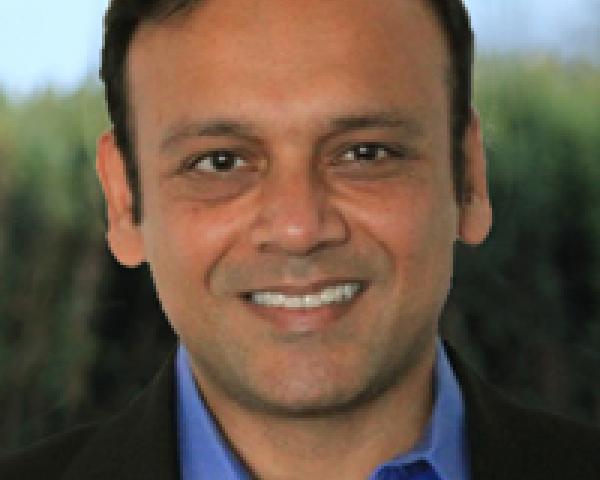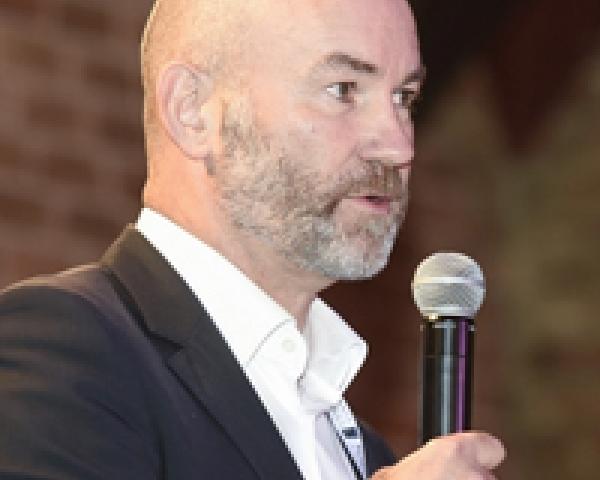- When the safeguards of the traditional corporation no longer exist, how do we protect the on-demand workforce?
- How should we regulate hybrid commercial/consumer activities?
- How can a square peg workforce function in a round hole system?
In the on-demand world, 40% of the U.S. workforce may be "contingent" by 2020. That fact raises important questions that must be addressed now.

Get Involved
Our authors are what set Insurance Thought Leadership apart.
|
Partner with us
We’d love to talk to you about how we can improve your marketing ROI.
|

Tim Attia is the CEO of Slice Labs; a technology company addressing challenges facing the on-demand economy. Prior to Slice, he worked with some of the largest global insurance carriers on technology and distribution. He started his career with a large technology and management consulting firm.
Cargill, Deere and other outsiders are retreating from crop insurance, but don't get complacent about nontraditional threats.

Get Involved
Our authors are what set Insurance Thought Leadership apart.
|
Partner with us
We’d love to talk to you about how we can improve your marketing ROI.
|

Karen Furtado, a partner at SMA, is a recognized industry expert in the core systems space. Given her exceptional knowledge of policy administration, rating, billing and claims, insurers seek her unparalleled knowledge in mapping solutions to business requirements and IT needs.
Processing claims takes time and resources for carriers -- while frustrating customers. Visual technology provides an answer.

Get Involved
Our authors are what set Insurance Thought Leadership apart.
|
Partner with us
We’d love to talk to you about how we can improve your marketing ROI.
|

Thomas Cottereau is the CEO and founder of SightCall, which has created an easy way to show what you see live leveraging a mobile phone. After 10+ years in the telecom industry, Cottereau decided to redefine remote interactions by building the first global cloud platform delivering rich communications to Apps.
The shift to value-based healthcare creates staggering opportunities to cut workers' comp costs while improving outcomes for workers.

Get Involved
Our authors are what set Insurance Thought Leadership apart.
|
Partner with us
We’d love to talk to you about how we can improve your marketing ROI.
|

Karen Wolfe is founder, president and CEO of MedMetrics. She has been working in software design, development, data management and analysis specifically for the workers' compensation industry for nearly 25 years. Wolfe's background in healthcare, combined with her business and technology acumen, has resulted in unique expertise.
Marketing leaders share insights on the need for personalization, emotions, the humanizing of insurance -- and more.

Get Involved
Our authors are what set Insurance Thought Leadership apart.
|
Partner with us
We’d love to talk to you about how we can improve your marketing ROI.
|

Paul Laughlin is the founder of Laughlin Consultancy, which helps companies generate sustainable value from their customer insight. This includes growing their bottom line, improving customer retention and demonstrating to regulators that they treat customers fairly.
Health providers will adopt IT in a big way, reinventing electronic health records, making systems interoperable -- and much more.

Get Involved
Our authors are what set Insurance Thought Leadership apart.
|
Partner with us
We’d love to talk to you about how we can improve your marketing ROI.
|

Sanjeev Agrawal is the president of the healthcare business and the chief marketing officer at LeanTaaS, a Silicon Valley company that uses advanced data science to optimize healthcare operations. Agrawal was Google's first head of product marketing.
LiveMed uses video technology for "face-to-face" meetings that cut costs, boost convenience and eliminate errors.

 Ravid explained to me, “LiveMed is a platform that allows financial institutions to confirm customer identity remotely, collect signatures remotely and provide a video record of the customer engagement.”
The way it works is simple.
When a face-to-face discussion is required, the insurer emails a link to the customer. This can be for events such as confirming a customer’s understanding of the insurance policy conditions or witnessing the signing of all parts of the policy agreement.
The customer activates the link and is connected via a live video to an insurance agent. The agent uses the LiveMed platform to conduct a secure, face-to-face discussion with the client. The platform allows documents to be shared between the two parties, which they can both review and amend in real time, before both parties sign electronically and the document is locked down.
The whole session is recorded and kept for several years in case a customer disputes the policy conditions or that he even signed the policy in the first place. (If you are interested in an example of a policyholder disputing an electronic signature, read this article in the Insurance Journal about Bonck v White.)
Knowing whom you’re talking to
While digital facial recognition technology (and other biometric measures) are advanced and sophisticated, humans remain better at visual identification. In some jurisdictions, that remains the only option because biometrics are not yet permitted for identity verification.
“Humans understand the face holistically,” according to the study “The Limits of Facial Recognition” by Tim De Chant. And visual identification still carries great weight in the process of verifying a customer’s identity and in fraud detection. Humans are better at assessing if we are who we say we are or if our claim is suspect.
There will always be occasions when a face-to-face meeting is required to complete a transaction. LiveMed enables this human interaction without requiring the customer to go to a branch or an insurance agent to visit the customer's home.
More than a VideoTech platform
Behind the video interaction, LiveMed’s algorithms verify the authenticity of documents supplied by the customer. Ravid told me, “When a customer brings in a fake document, we have a high success rate at identifying if it is a fake. We’ve developed a solution that takes real IDs, studies different parameters against them and then compares these with the documents being presented. The institution still relies on human judgment, but LiveMed gives the agent a reliable tool to help with the decision.”
The LiveMed platform uses webRTC, an open-source platform that provides browsers and mobile applications with real-time communications (RTC) capabilities via simple APIs. It also runs as a cloud or an on-premise solution to cater to an institution’s specific requirements and policies on security, data and technology.
It is a device-independent platform that delivers both mobile and web. Ravid explained, “We’ve worked hard to make this very easy to use for the customer. Simply click on the link, go online with the agent, finalize or review the document, open the signature box and then sign with their finger. Simple!
“We take any format document or webpage, whatever, and turn them into a series of pictures. This allows changes, sketches and amendments on the screen by both parties, [in] real time. Then these pictures, or pages, are locked and put together and sent to both parties as a record. We are patenting the technology because we believe it to be unique.”
The old-fashioned ways are no longer viable
Asking a customer to come into a branch carrying paper documents just isn’t going to cut it any more. Nor is the cost of sending a representative to meet the customer. In this digital, mobile age, time is precious, and money is tight.
We are also in the consumer protection age of regulation. Financial institutions need to be able to prove beyond doubt that their conduct is acceptable and that customers fully understand the financial decisions they are making.
This requires evidence both parties can rely on should there be a dispute. (See my previous research notes on RecordSure and its use of AI for compliance monitoring.)
With LiveMed, the finance institution “sees” the person in real time without the inconvenience or cost of a physical, in-person meeting. And because the transaction is completed there and then, the insurer doesn’t have to wait for documents to be sent and processed. And both parties can be certain there are no mistakes (that it's right the first time) because everything is checked and verified on the video call.
What next for LiveMed?
Ravid is one of three co-founders who bootstrapped LiveMed and took the start-up through the UpWest Labs accelerator in Palo Alto. LiveMed has now raised its first $400,000 from seed funding on its way to raising $1.5 million in a Series A. The minimally viable product (MVP) is built and in pilot with several financial institutions, and the new funding will enable the LiveMed to launch the platform into the U.S. financial services market.
This article was first published at www.dailyfintech.com
Ravid explained to me, “LiveMed is a platform that allows financial institutions to confirm customer identity remotely, collect signatures remotely and provide a video record of the customer engagement.”
The way it works is simple.
When a face-to-face discussion is required, the insurer emails a link to the customer. This can be for events such as confirming a customer’s understanding of the insurance policy conditions or witnessing the signing of all parts of the policy agreement.
The customer activates the link and is connected via a live video to an insurance agent. The agent uses the LiveMed platform to conduct a secure, face-to-face discussion with the client. The platform allows documents to be shared between the two parties, which they can both review and amend in real time, before both parties sign electronically and the document is locked down.
The whole session is recorded and kept for several years in case a customer disputes the policy conditions or that he even signed the policy in the first place. (If you are interested in an example of a policyholder disputing an electronic signature, read this article in the Insurance Journal about Bonck v White.)
Knowing whom you’re talking to
While digital facial recognition technology (and other biometric measures) are advanced and sophisticated, humans remain better at visual identification. In some jurisdictions, that remains the only option because biometrics are not yet permitted for identity verification.
“Humans understand the face holistically,” according to the study “The Limits of Facial Recognition” by Tim De Chant. And visual identification still carries great weight in the process of verifying a customer’s identity and in fraud detection. Humans are better at assessing if we are who we say we are or if our claim is suspect.
There will always be occasions when a face-to-face meeting is required to complete a transaction. LiveMed enables this human interaction without requiring the customer to go to a branch or an insurance agent to visit the customer's home.
More than a VideoTech platform
Behind the video interaction, LiveMed’s algorithms verify the authenticity of documents supplied by the customer. Ravid told me, “When a customer brings in a fake document, we have a high success rate at identifying if it is a fake. We’ve developed a solution that takes real IDs, studies different parameters against them and then compares these with the documents being presented. The institution still relies on human judgment, but LiveMed gives the agent a reliable tool to help with the decision.”
The LiveMed platform uses webRTC, an open-source platform that provides browsers and mobile applications with real-time communications (RTC) capabilities via simple APIs. It also runs as a cloud or an on-premise solution to cater to an institution’s specific requirements and policies on security, data and technology.
It is a device-independent platform that delivers both mobile and web. Ravid explained, “We’ve worked hard to make this very easy to use for the customer. Simply click on the link, go online with the agent, finalize or review the document, open the signature box and then sign with their finger. Simple!
“We take any format document or webpage, whatever, and turn them into a series of pictures. This allows changes, sketches and amendments on the screen by both parties, [in] real time. Then these pictures, or pages, are locked and put together and sent to both parties as a record. We are patenting the technology because we believe it to be unique.”
The old-fashioned ways are no longer viable
Asking a customer to come into a branch carrying paper documents just isn’t going to cut it any more. Nor is the cost of sending a representative to meet the customer. In this digital, mobile age, time is precious, and money is tight.
We are also in the consumer protection age of regulation. Financial institutions need to be able to prove beyond doubt that their conduct is acceptable and that customers fully understand the financial decisions they are making.
This requires evidence both parties can rely on should there be a dispute. (See my previous research notes on RecordSure and its use of AI for compliance monitoring.)
With LiveMed, the finance institution “sees” the person in real time without the inconvenience or cost of a physical, in-person meeting. And because the transaction is completed there and then, the insurer doesn’t have to wait for documents to be sent and processed. And both parties can be certain there are no mistakes (that it's right the first time) because everything is checked and verified on the video call.
What next for LiveMed?
Ravid is one of three co-founders who bootstrapped LiveMed and took the start-up through the UpWest Labs accelerator in Palo Alto. LiveMed has now raised its first $400,000 from seed funding on its way to raising $1.5 million in a Series A. The minimally viable product (MVP) is built and in pilot with several financial institutions, and the new funding will enable the LiveMed to launch the platform into the U.S. financial services market.
This article was first published at www.dailyfintech.com
Get Involved
Our authors are what set Insurance Thought Leadership apart.
|
Partner with us
We’d love to talk to you about how we can improve your marketing ROI.
|

Rick Huckstep is chairman of the Digital Insurer, a keynote speaker and an adviser on digital insurance innovation. Huckstep publishes insight on the world of insurtech and is recognized as a Top 10 influencer.
Customer expectations, behaviors and risk profiles are evolving thanks to technology, social trends and other changes happening around us.

Get Involved
Our authors are what set Insurance Thought Leadership apart.
|
Partner with us
We’d love to talk to you about how we can improve your marketing ROI.
|

Denise Garth is senior vice president, strategic marketing, responsible for leading marketing, industry relations and innovation in support of Majesco's client-centric strategy.
Open heart surgery at a beautiful, modern facility an hour from Miami costs $1,400 -- vs. the average of $324,000 in the U.S.

Get Involved
Our authors are what set Insurance Thought Leadership apart.
|
Partner with us
We’d love to talk to you about how we can improve your marketing ROI.
|

David Contorno is president of Lake Norman Benefits. Contorno is a native New Yorker and entered this field at the young age of 14, doing marketing for a major life insurance company.
'Smart' devices are ubiquitous, but the technology is way ahead of the desire and ability of consumers and businesses to use it.

The connected world is here. Everything is "smart." And for insurers, the implications are huge. Whatever you insure can now be connected, monitored and analyzed. People, places and things, moving or stationary, living or non-living—are all becoming smart. Think that is an exaggeration? Consider the following products announced or displayed at the Consumer Electronics Show (CES) 2016, just a few of the thousands of smart products:
Add to that list smart belts, umbrellas and smoke alarms among many other things, and it’s difficult to find anything that doesn’t have a "smart version" today. And it’s all pretty exciting stuff. But here’s the rub—in many cases, the technology is way ahead of the desire and ability of consumers and businesses to use it. A few important considerations emerged as central themes at CES:
These five considerations along with other factors will affect adoption rates and opportunities for businesses and consumers. But it would be a mistake to conclude that there are too many complications or barriers to progress. In fact, the opposite is true. Advances are being made at breakneck speed, and barriers are being knocked down on a regular basis. If anything, this means that insurers need to be even more diligent and aggressive in shaping the future.
So, innovate to create new value propositions. Seize opportunities to transform the customer experience. Weigh in at relevant standards and platform discussions. Join new ecosystems and seek partnerships with unconventional allies. And build up your enterprise analytics expertise and capabilities.
The digital, connected world is here. If you want your company to thrive in this new era, you must jump in with both feet. The possibilities are endless, but you must play a role in shaping and capitalizing on them.
Get Involved
Our authors are what set Insurance Thought Leadership apart.
|
Partner with us
We’d love to talk to you about how we can improve your marketing ROI.
|

Mark Breading is a partner at Strategy Meets Action, a Resource Pro company that helps insurers develop and validate their IT strategies and plans, better understand how their investments measure up in today's highly competitive environment and gain clarity on solution options and vendor selection.